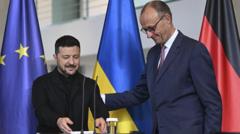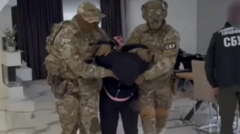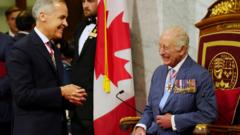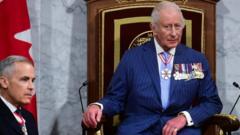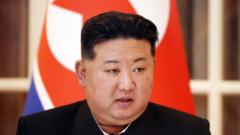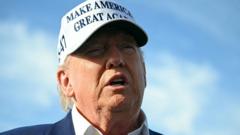As NATO prepares for crucial discussions, the presence of divergent leaders like Trump and Zelensky raises uncertainty about the future of Ukraine's NATO membership.
NATO Summit: A Troupe of Tensions Ahead of Key Decisions

NATO Summit: A Troupe of Tensions Ahead of Key Decisions
NATO's upcoming summit in the Netherlands may be overshadowed by conflicting views on Ukraine between the U.S. and its allies.
The head of NATO aims for a smooth annual summit next month, as insiders express concerns about potential discord, particularly regarding Ukraine. NATO Secretary General Mark Rutte plans for a brief and focused session during the gathering on June 24-25 in the Netherlands, seeking to steer clear of past fractures that plagued discussions two years ago over the ongoing conflict.
However, the attendance of President Trump complicates matters, as he harbors opposing views on Ukraine's aspirations for NATO membership, which conflict with those of many allied nations. The new dynamics come amidst a noted shift in U.S. military policy, with indications that American troop presence in Europe may change significantly, leading to rising questions about NATO's collective security stance.
Trump's reduction of support for Ukraine has raised eyebrows, especially as he moves away from efforts aimed at achieving a ceasefire and seems inclined toward re-establishing relations with Russia. The interplay between Trump and Ukrainian President Volodymyr Zelensky, who is also expected at the summit, adds another layer of complexity. Speculation surrounds whether Zelensky will even be allowed to participate during key moments of the summit, such as the opening dinner.
Despite these uncertainties, U.S. Ambassador to NATO, Matthew G. Whitaker, has indicated an expectation for Zelensky to be present, although discussions are still underway surrounding his official capacity. As the date approaches, the impact of this summit on NATO's future, particularly in relation to Ukraine, remains precarious amidst diverging leadership perspectives.
However, the attendance of President Trump complicates matters, as he harbors opposing views on Ukraine's aspirations for NATO membership, which conflict with those of many allied nations. The new dynamics come amidst a noted shift in U.S. military policy, with indications that American troop presence in Europe may change significantly, leading to rising questions about NATO's collective security stance.
Trump's reduction of support for Ukraine has raised eyebrows, especially as he moves away from efforts aimed at achieving a ceasefire and seems inclined toward re-establishing relations with Russia. The interplay between Trump and Ukrainian President Volodymyr Zelensky, who is also expected at the summit, adds another layer of complexity. Speculation surrounds whether Zelensky will even be allowed to participate during key moments of the summit, such as the opening dinner.
Despite these uncertainties, U.S. Ambassador to NATO, Matthew G. Whitaker, has indicated an expectation for Zelensky to be present, although discussions are still underway surrounding his official capacity. As the date approaches, the impact of this summit on NATO's future, particularly in relation to Ukraine, remains precarious amidst diverging leadership perspectives.


